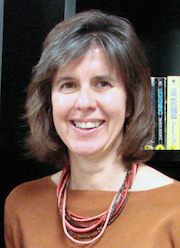When Student Inquiry Becomes Student Action
A MiddleWeb Blog
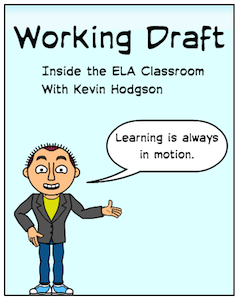 If ever there was a time to think about how to prepare our students for the larger stage of the public civic sphere, now is the time.
If ever there was a time to think about how to prepare our students for the larger stage of the public civic sphere, now is the time.
From Black Lives Matter to the #MeToo movement to the student walk-outs over gun control, young people are becoming active in their communities and on social media in ways not seen for some time.
Author/educator Steven Zemelman has been working with and encouraging teachers to set the stage for these kinds of actions, and in his most recent book, From Inquiry to Action: Civic Engagement with Project-Based Learning in All Content Areas, Zemelman makes a powerful case for authentic learning and authentic work by students.
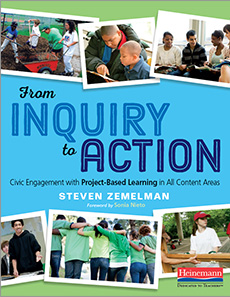 With the national March for Our Lives protest March 24, I asked Zemelman some questions about how teachers can take advantage of events to spur students into action within their own communities, and on the national stage. His responses come from his work with teachers and with young people and provide steps forward for educators wondering how to help students make a difference in the world.
With the national March for Our Lives protest March 24, I asked Zemelman some questions about how teachers can take advantage of events to spur students into action within their own communities, and on the national stage. His responses come from his work with teachers and with young people and provide steps forward for educators wondering how to help students make a difference in the world.
Steve and I know each other through our work with the National Writing Project. I have used some of his other books during professional development and on my own, and in the fall Steve visited my classroom for a few hours. Steve has been documenting examples of this inquiry-into-action work at his blog home at Medium: Civic Action in Schools.
Kevin: The 2016 presidential election has brought the term “civic engagement” to the surface in many ways. Our state of Massachusetts, for example, is on the path to new Social Studies standards that have student civic engagement as the main thread, front and center. I suspect you were writing your new book before the last election. What initially led you to this topic of student inquiry and action projects, and how does this concept resonate in the current times we live in?
Steve: Resonate? Does it ever. But first, how I came to this. About five years ago I organized a TEDx event to help bring teachers’ voices to the public arena. One speech in particular, by Chicago high school history teacher Elizabeth Robbins, just blew me away (view it on YouTube here or below).
She described how her students, troubled by the prevalence of date violence, created and tested their own curriculum on this issue and convinced the Chicago Public Schools to accept it.
I had to see her classroom, and then the classrooms of other teachers guiding this vital kind of learning. I could see how it deeply engaged students of all grades and levels. They were learning to become skilled and active citizens by studying and addressing issues, instead of just talking about them.
Even five years ago, we could see how people had grown cynical about public institutions but felt helpless to make changes. I knew I couldn’t solve the whole problem, but I couldn’t stand by, either. I concluded that work on this kind of teaching and learning was the most useful thing I could do at this late stage in my professional life.
As for resonating – this goes well beyond resonating. Teachers say to me, “My students walked out of the building in respect for the lost Parkland students, but then stood around, asking ‘Now what?’ What do we say to them?”
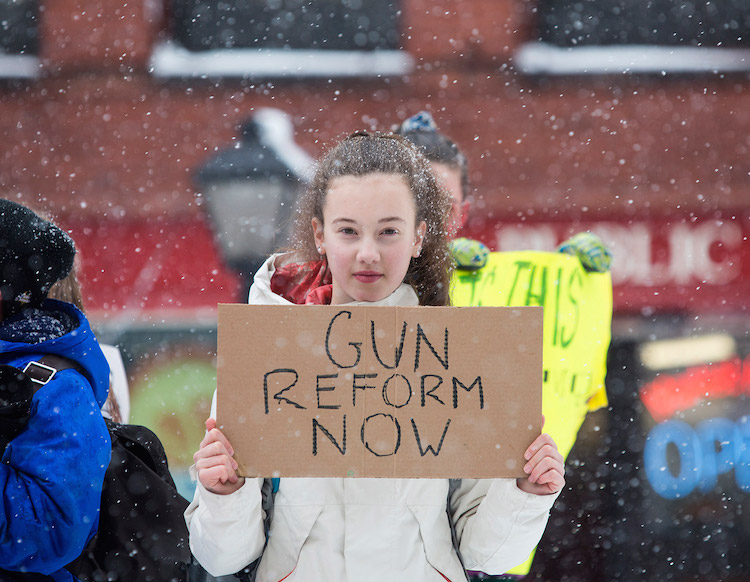
Student Walkout – King Middle School – Portland ME
My position is that as teachers we can give them the skills and practice so that they begin acting as able and responsible citizens to address problems they see. This does not mean we tell them what to believe or indoctrinate them politically. No, we’ll be preparing them to be citizens in a democracy. And that’s what public schools in this country have been intended to do (see The Civic Mission of Schools document on the web).
Kevin: I was reading a post in Slate about the Parkland youths who were front and center on the public stage after the horrible shooting at their high school. These students were articulate and passionate, and the article suggested that these students had long been prepared this kind of civic engagement by the school they attended. Do you think their school – Marjorie Stoneman Douglas High School – is an isolated case, where the arts and public speaking curriculum is still strong and supported?
Steve: Of course, many schools do indeed have a way to go. However, there are plenty of teachers, whole schools, and school districts that are stepping up. I’m very proud that in Chicago Public Schools, the Department of Social Science and Civic Engagement is promoting civic action in high schools across the city. The state of Illinois now requires a civics course for all high school students, and it’s supposed to include active experience, not just textbook study.
And you’ll find great stories of particular classrooms on educational news sites almost every day. I try to feature some of these on my blog, Civic Action in Schools.
By the way, student actions needn’t necessarily be about big, controversial issues. When second graders decide to carry out a campaign for their peers to treat one another positively on the playground, they are developing the skills and dispositions to be active and constructive in their community. And if they do this repeatedly throughout their school careers, they are more likely to become active leaders as adults (though we need more and deeper research on this).
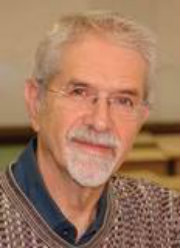
Steven Zemelman
One more thing: Many schools are responding with “service learning” for their students. This is okay as far as it goes. But serving meals at a food pantry is not nearly as powerful as presenting a plan for community improvements to the local city council. That’s how students discover they have a voice and that adults will listen to it.
In other words, the work involves an effort to change the community (or school or neighborhood) in some way, and to address an audience relevant for seeking that change. This is what I’ve seen transform students, both as learners and as young people who come to care about the world around them.
Kevin: You are careful to reference ways that social action projects dovetail with many elements of a given curriculum, even including an interesting example of how math could dovetail with analyzing data from surveys. Do you find that teachers often need that kind of reassurance, or perhaps need evidence for administrators, when considering social action projects?
Steve: It’s essential to connect social action projects to the curriculum for a number of reasons.
♦ First, teachers are hired by and responsible to their school district to carry out the curriculum that has been mandated. That’s an essential part of our job, so we need to honor it.
♦ Second, many standards in the curriculum are themselves the tools for doing the work of civic action. You mentioned data analysis. Obviously, many projects involve nonfiction reading, research, writing, argumentation, speaking, learning the structures of government, and in some cases acquiring science knowledge. However, teaching the skills without embedding them in meaningful action deprives students of learning why and how they are necessary in their lives.
♦ Finally, there’s the matter of time. Never enough of it. To make room for projects, something may have to give. But as a project inevitably includes learning in required areas, we can more easily delete corresponding curricular pieces that would have been taught in a different (and perhaps less exciting) way.
Kevin: When you visited my classroom a few months ago, and you were asking about different projects, I had mentioned my sixth graders doing our own version of Letters to the President 2.0, a project sponsored by the National Writing Project and the Educator Innovator network.
You suggested that this might only be a starting point with limited impact on the communities students lived in. You suggested that the more powerful way to engage learners is in the places where they live, where they might enact and see the results of the changes they are advocating. Can you explain more about this approach to a “local lens” around inquiry and advocacy work?
Steve: There’s a very entertaining children’s picture book, Billy and the Bad Teacher, by Andrew Clements and Elivia Savadier. Billy disapproves of his teacher’s behavior, and after gathering “evidence” he writes four letters: one to the principal, one to the mayor, one to the governor, and one to the president of the United States. Actually, he realizes that he likes the teacher and tears up the letters. But you know very well which letter had any chance of getting a result.
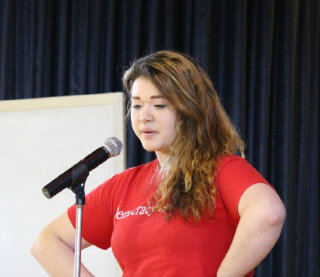
From Steve’s blog: Teachers — We Can Help the Kids Learn to Take Thoughtful Action on Gun Violence So They Succeed
The advantage of local action is that students are more likely to engage with people in the community so they get heard and get a response. Even when they fail, the effort becomes very meaningful to them.
In Brian Schultz’s book, Spectacular Things Happen Along the Way, the students launch a campaign to get their dilapidated school building rehabbed. When they ultimately (spoiler alert!) got turned down, their response was, “We got heard by a lot of people . . . we were a good group of kids fighting for what is right. . . [Our school] has pride, and I will keep it when I go to a different school.”
Of course, young people are aware of many larger issues – global climate change, poverty, discrimination. One way to approach this is the well-used phrase, “Think globally, act locally.” Are the students wondering about water pollution and health in Flint, Michigan? Okay, but are we really sure the water is safe in our own aging school building? In our neighborhood? Time for some research!
Kevin: You and I and others often connect on Twitter, Medium and other spaces. Much of our work is about empowering teachers, to give colleagues a way to raise their voices on a larger spectrum to impact the way we talk about teaching and learning. Do you think a social media presence helps or hinders students when taking their social advocacy to the larger stage?
Steve: Social media is where the kids live. I’m sure it made a huge difference for the school walkout event. We can worry about too much screen time, but this is their reality, so let’s help them use it smartly. Hm. I wonder how many teachers will read this on their smartphones. [Editor: About 40%.]
Kevin: You spend a considerable amount of time in Chapter 5 on classroom community building. How does this idea of building within the classroom fit into the idea of reaching out in the world beyond the school?
Steve: How can we ask students to try to improve the world outside and not tend to our own world in the classroom? I was impressed that all the teachers I’ve observed (and stolen ideas from) help their students value one another, care for one another, listen to one another, and take responsibility for handling conflict respectfully.
The classroom is a community too, and there’s often plenty of work needed to strengthen its culture. In fact, in some student social action projects, the focus is their classroom. And if they are learning and using skills to research, write, plan, and carry out an action, they’re doing the work that we’re talking about.
Steven Zemelman reflects on the value of project learning in promoting student civic engagement.
Kevin: I appreciated the variety of ways you tried to address times when “difficult moments” might arise – either through comments of students, peer interactions when developing a project, or even difficult issues that might align with the thinking and beliefs of the teacher. What’s the best piece of advice you might give a teacher when suddenly and unexpectedly confronted with a difficult moment? Are there any topics that you think should be off limits for students?
Steve: In Randy and Katherine Bomer’s book, For a Better World: Reading and Writing for Social Action, I was especially impressed by Katherine’s handling of a misogynistic remark in her primary classroom when a boy declared that a girl couldn’t be president. She brought the students into a circle, led an in-depth discussion, and turned this into a mini-inquiry about sexism the students hear or read about.
Elizabeth Robbins charges her students at the beginning of the year with the responsibility of speaking up – respectfully, of course – if hurtful or prejudiced statements are made. She’s always looking for ways to give the students responsibility rather than keeping all of it for herself.
Off limits topics? If something seems truly out-of-bounds I’d guess the student may be experiencing some deeper issue and is indirectly seeking attention or even help, so a one-on-one conference is in order. I have to be honest, though, that it can be hard for me to control myself and keep from shooting from the hip.
Kevin: You end your book with advice on ways teachers might help foster a community of inquiry and social action around them. You note that many teachers often feel isolated and alone when enacting something new, and it’s potentially unsettling to some educators as students tackle challenging issues and raise voices in the community. What’s the best way to get colleagues and administrators on board as either partners or at least as a support network?
Steve: It’s easy to talk about fostering change in a school, but hard to do. Schools are individual worlds, each one a culture with its own history, social norms, teacher groupings, differences, leadership styles. This is a complex structure that can effectively resist or support change. And each often reflects the surrounding milieu.
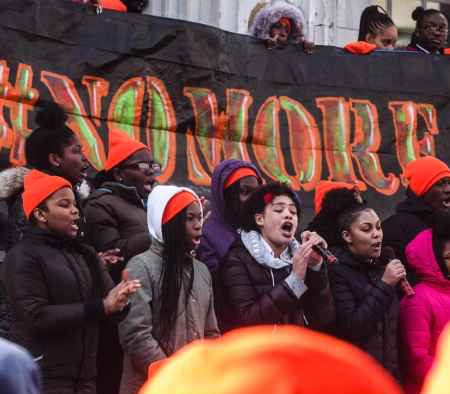
Brooklyn Ascend Middle School 8th grader Lena Santana recites a poem at March 23 rally against gun violence. (NY Daily News)
I’ve seen a skilled community organizer outmaneuver the nay-sayers in a building and help a democratic teacher leadership team working to make real change. I’ve seen a newly hired not-very-savvy principal come in and destroy that structure in one stroke. I know of a lot of wonderful but isolated unicorns. Much depends on the school leadership, as we know. Fortunately, our schools are filled with lots of smart, caring teachers, so the potential for change is always there.
Working with a very skilled community organizer for several years, I learned strategies and ways of thinking about change in organizations that I had never known. It was like taking a fresh graduate course. I learned about organizers’ key strategy – one-on-one discussions to build trust and learn people’s points of view and self-interests. I learned how to do a power analysis and plan a step-by-step campaign. I realized there was usually a range of possible actions so one could consider which might be most likely to move an effort forward at a given point.
Should you speak up at a meeting, talk separately to the principal, bring together several like-minded colleagues, or have a one-on-one with someone who disagrees with you? There isn’t space here, nor do I have the expertise, to detail this work of change. But it’s clearly possible. One outstanding educator working on this is Cathy Fleischer at Eastern Michigan University. Her summer institute on teacher advocacy takes place July 10-12 this year. Check out her website Everyday Advocacy.
Building the democratic, participatory culture that this country has envisioned looks to be a long-range process. As Martin Luther King said, “The arc of the moral universe is long, but it bends toward justice.”
It looks to me like a fresh generation of active young people is now stepping up to push on their piece of the arc. I don’t want to sound all sentimental, but that’s where I think we’re headed now, and we teachers can help them do it.
Feature image: Middle school students march in Santa Monica (The Corsair)

